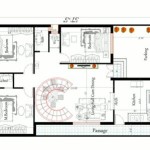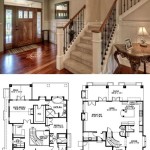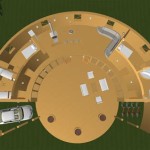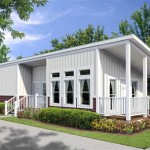How to Create a Floor Plan in Revit: A Comprehensive Guide
Revit, a powerful BIM software, allows users to create detailed and accurate floor plans efficiently. Here's a step-by-step guide to help you navigate the process:
1. Start a New Project
Launch Revit and select "New Project" to create a new file. Choose the appropriate template based on the type of building you're designing.
2. Create a Level
A level represents a floor in your building. Select "Architecture" > "Level" and click at the desired elevation to place the level.
3. Draw Walls
Select "Architecture" > "Wall" and choose a wall type. Use the "Create Wall" tool to draw the perimeter walls of the room, specifying the thickness and height.
4. Add Doors and Windows
Select "Architecture" > "Door" or "Window" and choose the appropriate type. Click the "Edit Type" button to specify the door or window's size, material, and other properties.
5. Insert Furniture and Fixtures
Revit provides a library of pre-built furniture and fixtures. Select "Insert" > "Load Family" to import the desired elements into the project, and then place them on the floor plan using the "Component" tool.
6. Create Dimensions and Annotations
Select "Annotate" > "Dimension" to add dimensions to the floor plan, indicating the length and width of walls, doors, and windows. Use annotations to add text, symbols, and notes to the plan.
7. Create a Title Block and Sheets
A title block contains project information, such as the drawing number, title, and scale. Select "Insert" > "Title Block" to create one and place it on the sheet. Sheets are used to organize the floor plans, schedules, and other documents within the project.
8. Save and Collaborate
Save your floor plan regularly. Revit supports collaboration, allowing multiple users to work on the same project simultaneously. Use the "Collaborate" tab to assign tasks, track changes, and share the project with others.
Additional Tips:
- Use layers to organize different elements of the floor plan.
- Create templates to save time and ensure consistency across projects.
- Utilize the Properties palette to modify element properties and specifications.
- Consider using plugins to enhance Revit's functionality.
- Practice regularly to improve your proficiency in Revit.

14 Beginner Tips To Create A Floor Plan In Revit Pure

Revit Create A Floor Plan Mark Calloway

14 Beginner Tips To Create A Floor Plan In Revit Pure

14 Beginner Tips To Create A Floor Plan In Revit Design Ideas For The Built World

14 Beginner Tips To Create A Floor Plan In Revit Design Ideas For The Built World

14 Beginner Tips To Create A Floor Plan In Revit Pure

14 Beginner Tips To Create A Floor Plan In Revit Pure

14 Beginner Tips To Create A Floor Plan In Revit Design Ideas For The Built World

Level 3 Floor Plan Revit 2024 Scientific Diagram

14 Beginner Tips To Create A Floor Plan In Revit Pure








